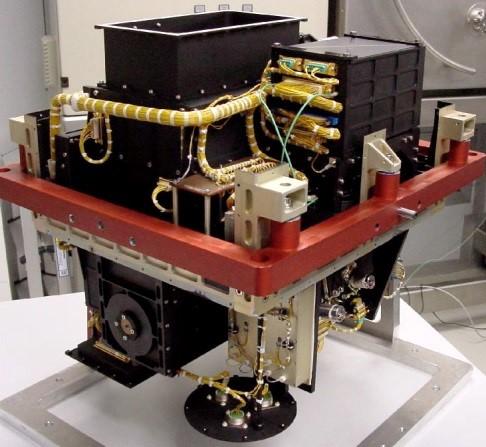The birth and long life of SOLSPEC
The full solar spectrum and its variability during a solar cycle, only measurable from space, are fundamental for the solar physics, the Earth's climate and atmospheric chemistry. Spectral measurements are required, mainly due to the wavelength dependence of the photochemical process occurring in the atmosphere.
By the end of the 70's, France and Belgium worked in unison to design a robust UV-VIS-IR space qualified spectroradiometer: SOLSPEC (for SOLar SPECtrum) was born! A first version of the instrument contributed to the dissemination of the reference ATLAS-3 solar spectrum.
After 1996, the instrument was redesigned for the long-term SOLAR mission onboard ISS. For SOLAR/SOLSPEC, a thorough pre-launch work has been carried out at BIRA-IASB's optical laboratories, both for the new development phase of optics, mechanics and electronic components, and for the radiometric characterization. The absolute calibration was performed at the PTB (Physikalish-Technische Bundesanstalt) in Germany. It made SOLAR/SOLSPEC ready for absolute solar measurements covering 96 % of the solar spectrum (from 166 nm to 3 µm)!
The 9-years SOLAR mission
The SOLAR/SOLSPEC instrument was put into orbit in February 2008. During 9 years, BIRA-IASB was in charge of the data acquisition, in collaboration with B.USOC.
After in-depth data processing, a new reference solar spectrum was released: SOLAR-ISS (for low solar activity). It is the first spectrum obtained outside the atmosphere over so wide a wavelength range, with a low and known level of uncertainty (about 1.26% error across the spectrum).
In addition, an exhaustive knowledge of the instrument device functions allows to establish a fully PTB traceable solar spectrum. SOLAR-ISS provided valuable information regarding the less known part of the solar spectrum above 1500 nm.
SOLAR mission: objectives achieved!
References
- Meftah, M., Damé, L., Bolsée, D., Hauchecorne, A., Pereira, N., Sluse, D., Cessateur, G., Irbah, A., Bureau, J., Weber, M., Bramstedt, K., Hilbig, T., Thiéblemont, R., Marchand, M., Lefèvre, F., Sarkissian, A., Bekki, S. (2018). SOLAR-ISS: A new reference spectrum based on SOLAR/SOLSPEC observations. Astronomy & Astrophysics, 611, A1. https://doi.org/10.1051/0004-6361/201731316


